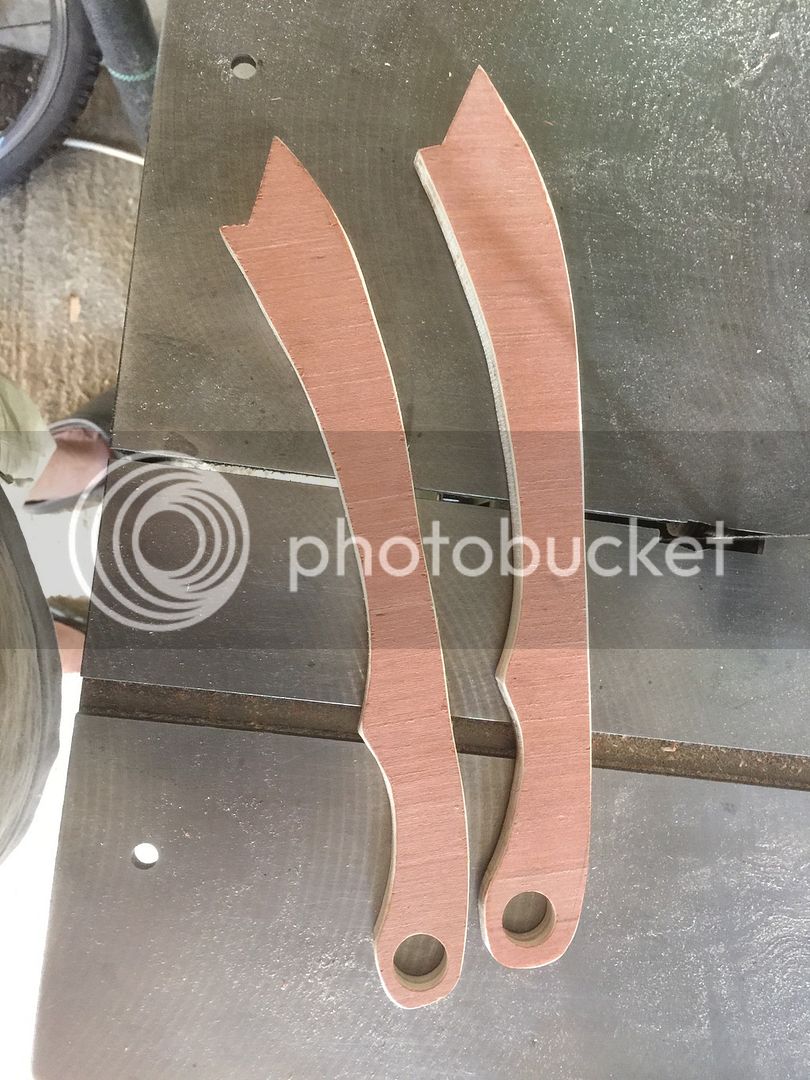Phil Pascoe
Established Member
:idea: I cut the back of my wedding ring and rounded the ends. I caught it badly one day and ripped it off, never to be seen again. I still have the finger though.

Push sticks - it's push all the way. Pulling is not good.PAC1":3oik9xc0 said:Mike, I agree with you. I said nothing about pressing down on the infeed table. I said I prefer to push rather than pull the wood. For some reason I think you can maintain pressure better pushing than pulling. If you pull the wood there is a tendency to lift it even if ever so slightly and sub conciously.
I think power feeds don't work too well with a planer as sawn timber needs a lot of thought given as to how/where to push, push down, etc. Once you have one flat face or edge a power feed (thicknesser, spindle etc) comes into its own.ayuce":3o8wrwgs said:Just for curiosity, is there any simple cheap aftermarket power feed for planer ? Smtg like simple rubber roller on the outfeed table. Even the simplest thicknessers have power feed and anti kickback claws, but no planer ?
woodbrains":2t7l6f0m said:Hello,
The outfeed table is actually the reference side of the machine. Once the wood has passed the cutters, the flattened, or partially flattened wood needs to be in contact with the outfeed table for the rough side to be planed parallel to it. If the In feed side is pressed down, there is a likelyhood that a bow will cause the outfeed side to lift and the flat reference is lost. The action of pressing the wood down and moving it forward on the outfield table is no different to pressing and moving it forward on the infeed, so there is no issue with maintaining pressure, it is just Wobblies on the infeed.
If the OP feels safer with push pads, then fair enough.
Mike.








Beau":127v65f3 said:if you keep your knives sharp the cutting almost holds the wood down against the tables. It's when the blades get blunt that you start needing more downward pressure
-Matt-":kb24bdiu said:How about making a flat board say 150x250mm, with a nice shaped handle (perhaps a D shaped arch or a plate tote style) and gluing that grippy rubber stuff you can get for car dashboards to the underside?
-Matt-
You may not see it but if you get into the habit the advantage soon makes itself apparent.PAC1":345snt0s said:Jacob - I use push sticks on the saw all the time but on the planer I cannot see the advantage. ....
PAC1":2rs43kes said:Jacob - I use push sticks on the saw all the time but on the planer I cannot see the advantage. I keep my hand at least 1 foot away from the blade with the guard properly fitted. I do not plane short lengths so I cannot understand why the loss of control outweighs any safety concern
You can use a power feeder for planer but I do not see how you can properly straighten the wood when using a power feeder as you have no ability to let the planer plane out the bow.

Exactly the same but with a push stick in each hand.PAC1":36q5bry5 said:......
Jacob I get all you say just I do not get it for planing. On the table saw and spindle I agree but on the planer I was taught the left hand jumps over the bridge as soon as there is enough wood for it to land on and the right hand never passes over the block whether surfacing or especially edging
Me too! I've never managed to work out how Jacob routinely uses push sticks on a surface planer, something he's mentioned many times in the past, especially for larger and heavier stuff. I can just about see how they might occasionally have a use in edging smaller pieces, but for everything else, it's got me a bit stumped.PAC1":doc47fyx said:Jacob, so if you were planing a 2.1m 115 x 75 door jamb you would use push sticks? If yes why is that better than using your hands? Same with say a 300mm x 25 panel?
Both. I'd use my hands but have a push stick in each of them to give longer reach when needed but mainly for the last bit where the cutters are exposed. You just get used to it. And you can be a bit lax about a top guard as your hands are never going anywhere near the cutters.PAC1":11zm8hus said:Jacob, so if you were planing a 2.1m 115 x 75 door jamb you would use push sticks? If yes why is that better than using your hands? Same with say a 300mm x 25 panel?
Enter your email address to join: